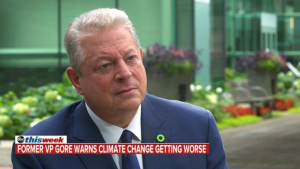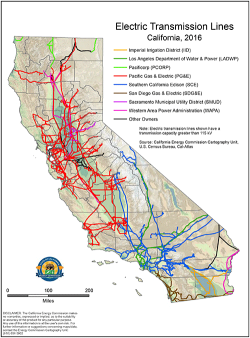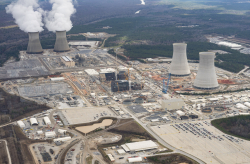 The Sun shines. The wind blows. The tides roll. We live on a molten rock.
The Sun shines. The wind blows. The tides roll. We live on a molten rock.
Yet in 2019 California’s electricity was still running through a centralized system that was obsolete 20 years ago, when then-Vice President Al Gore coined the term “enternet,” predicting renewables could make the energy grid resilient.
Now that his vision is possible, he’s silent.
Ordinary people are now way ahead institutions of this. Residential solar is growing at 30% per year. The fastest growing occupation over the next decade is expected to be that of a solar power installer. Old solar panels are even recyclable, into anodes for new solar panels.

Costs are still declining. A Tesla solar roof now costs less than a conventional roof with solar panels. Tesla is offering discounts on solar panel-Powerwall combinations in areas impacted by the California blackouts.
Of all the nation’s big utilities, PG&E was most accepting of the solar revolution that occurred during this decade. They accepted all the new energy that homeowners and developers could pour into their grid.
But it was still their grid.
That was the problem.

In an era of renewable energy, this is ridiculous. Solar energy can be obtained anywhere. It’s especially abundant in the heat sinks caused by intensive development. Wind energy can also be obtained close to where it’s used.
Solar capacity peaks in the late afternoon, when people are most likely to turn on air conditioners. Wind capacity usually peaks at night.
The greatest development of this decade, however, wasn’t the solar panel or the wind turbine. It was lithium ion batteries. The Rocky Mountain Institute expects battery investments to total $150 billion in 2023.
This will cut the price of storing renewable energy in half, RMI predicts, to as low as $87 per kilowatt hour. Lithium ion batteries can be re-charged thousands of time and retain 90% of their capacity. They can also be scaled to protect a utility’s electrical grid. Australia has proven this.
What has kept this technology from reaching its full potential is politics. Political leaders have felt no pressure to challenge utilities on their grid designs. Utilities know that a decentralized grid, in which homeowners and companies can sell as well as buy power, threatens their old business model. They hesitate. No, they fight it.

The business model is broken. The grid is broken. That’s the lesson.
What utilities are telling their regulators and the public, however, is that none of this is true, that PG&E’s crime was in “giving in” to “environmental whackos.”
PG&E is still trying to sell this nonsense to Californians.
Utility companies nationwide are demanding an absolute faith in their grid models and businesses that should not exist. Southern Co., the utility that serves my home in Atlanta, just forced down yet-another price hike down my throat to pay for nuclear plants that may never get built. Nuclear contracts are completely one-sided. We’ll pay even if the project fails. We’ll pay for decades.

ade fire, pushing PG&E to minimize power disruptions. We’re still letting PG&E, and all utilities, get away with policies that are destructive to the environment, that fail the test of resiliency, and (most important) don’t work.
Al Gore came off as a bit of a scold, even a decade ago, when An Inconvenient Truth won an Oscar.
We need to hear from him again.
He needs to stop warning about things we already know. He needs to come forward with solutions, with some hope that the worst can be averted.
It doesn’t have to be political. Just cut some ads. Say we need solar and we need wind in ads from solar and wind companies. Say we need batteries in ads for battery companies. He doesn’t have to endorse a vendor, just a concept.
It’s time for his closeup.










